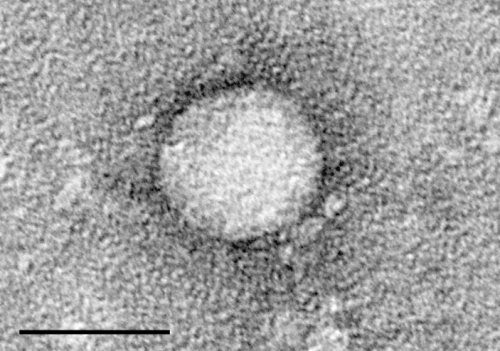Researchers chart 'fitness landscape' to fight Hep C virus

Borrowing from several statistical science models, an interdisciplinary team of researchers from the University of Illinois at Urbana-Champaign has developed a novel computational approach for massively accelerating the search for a hepatitis C vaccine.
"Hepatitis C virus infects 170 million people and kills 350,000 annually," explained Andrew L. Ferguson, an assistant professor of materials science and engineering and of chemical and biomolecular engineering at Illinois. "Effective drug treatments have recently become available, but their high cost makes them effectively unavailable in the developing world where most infections exist.
"A vaccine offers the best hope for global control of the epidemic, but despite 20 years of study, none yet exists. A challenge to vaccine design is that we do not know what parts of the virus we should target to best protect the host. In other words, we do not know how to hit the virus where it hurts. In this work, we present an approach to systematically identify vulnerable targets and computationally design hepatitis C vaccine candidates predicted to cripple the virus."
By applying so-called "spin glass" models from statistical physics commonly used to describe the behavior of magnets and fluids, the researchers translated clinical databases of hepatitis C virus sequences into "fitness landscapes" quantifying the replicative capacity of the virus as a function of its amino acid sequence. Charting the peaks and valleys of viral fitness, the fitness landscape reveals how best to attack the virus to force it from the high-fitness peaks down into the low-fitness valleys where it is least able to replicate and harm the host.
"We have computed the fitness landscape for the hepatitis C virus protein responsible for viral replication to identify parts of the virus most susceptible to immune attack," said Gregory R. Hart, a graduate researcher in physics and first author of the paper, "Empirical fitness models for hepatitis C virus immunogen design," appearing in the journal, Physical Biology. The research team used its model to computationally test 16.8 million candidate vaccines to identify 86 optimal formulations targeting viral vulnerabilities highly susceptible to vaccine-induced immune attack by the T-cells (white blood cells) of the host immune system.
"By identifying a small number of promising vaccine candidates within the vast search space of possible designs, our computational approach can guide experimental vaccine development and massively accelerate the search for a hepatitis C vaccine," Ferguson added. "We anticipate that with increasing computational power and reducing sequencing costs, it will soon become feasible within the coming years to apply our technology to the complete HCV proteome and perform rational in silico design of a complete anti-HCV immunogen."
More information: Gregory R Hart et al. Empirical fitness models for hepatitis C virus immunogen design, Physical Biology (2015). DOI: 10.1088/1478-3975/12/6/066006




















